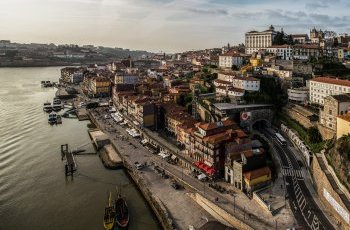Northern Region contributed most to increase labor productivity in the country

The North was the region that most contributed to increase labor productivity between 2000 and 2017, growing 20% compared to the Metropolitan Area of Lisbon, which rose 3.3% in the same period. However, despite this contribution, the Northern Region remains the one with lowest income per inhabitant. The conclusions are from a study by the Northern Regional Coordination and Development Commission (CCDRN).
"The North, the region with the lowest income per capita in the country, was the one that most contributed to the increase in labor productivity in Portugal between 2000 and 2017. This is a unique circumstance in the European Union (EU), where the regions developed countries in the different Member States (border regions), most of them in their capitals, were the main drivers of this growth", describes the CCDRN referring to the report.
In a "special edition" in which the analysis is not limited to the region but is compared with other national and European areas, the document states that, in 17 years, "Portugal was marked by a weak pace of growth in labor productivity (only 15, 2%, in accumulated terms), in striking contrast with other European countries, in particular those of Eastern Europe", quotes Lusa.
"The weakness in the pace of growth in labor productivity was especially notorious and serious in the case of the Metropolitan Area of Lisbon, which grew only 3.3%", the document states. In comparative terms, "the evolution in the Northern region was much more favorable, having registered an accumulated growth of 20.0%", he adds.
However, the report states that "despite the much more favorable evolution" of the North as a whole, the region's growth was "modest in the European context". "Labor productivity in the North region represented about two thirds of the average value of the EU and its most industrialized regions and just over half of the value observed in the border regions", describes the North Structure.
According to the CCDRN, the analysis, which uses an OECD database [Organization for Economic Cooperation and Development], "counterposes, in some way, hypotheses that have been conveyed around the weakness of growth in Portugal, either by increasing internal disparities in growth paths or by insufficient promotion of the border region - in this case the Metropolitan Area of Lisbon - in favor of a priority given to internal cohesion".
The CCDRN says that the increase in labor productivity in the North "will have resulted, above all, from the restructuring processes of its main sector of economic activity, the manufacturing industries, with a growth of 51.6%". This corresponds to the "12th highest growth among the 21 most industrialized European regions included in the study".
The CCDRN notes that, in parallel, the manufacturing industries "lost about 150,000 jobs". In addition, "the Northern region also recorded job losses in construction and in the primary sector (100 thousand and 50 thousand individuals, respectively)".
In return, the Region "benefited from moderate job transfers in favor of more dynamic and innovative economic activities, such as the upper tertiary sector (consultancy, scientific, support services, information, communication, financial and insurance services)". In these areas, 64 thousand new jobs were created.
In the "most undifferentiated sectors (commerce, transport, restaurants and hotels)", 60 thousand jobs were created.
The North Structure is a document prepared by CCDRN that reads the socioeconomic trends of the region in the medium and long term.
Porto and North Region's GDP grew twice as fast as the rest of the country
The GDP of Porto and the North Region also grew at an average annual rate of more than 4% between 2014 and 2017. Foreign direct investment (FDI) in the Region, on the other hand, reached an annual growth of 11.4% in the period 2013 to 2018, contributing to job creation, indicates the study commissioned by the Municipality of Porto to EY, on the Attractiveness of Porto and the Northern Region.
The report "Porto and Northern Portugal: A Magnet for Investment - Portugal Regional Attractiveness Survey 2019" also concludes that, in 2018, Porto and North generated 39% of Portuguese exports, "with an import coverage rate of 131%". In the same year, foreign direct investment (FDI) created 2,754 new jobs in Porto and the Region, representing 45% of the total registered in the country.




